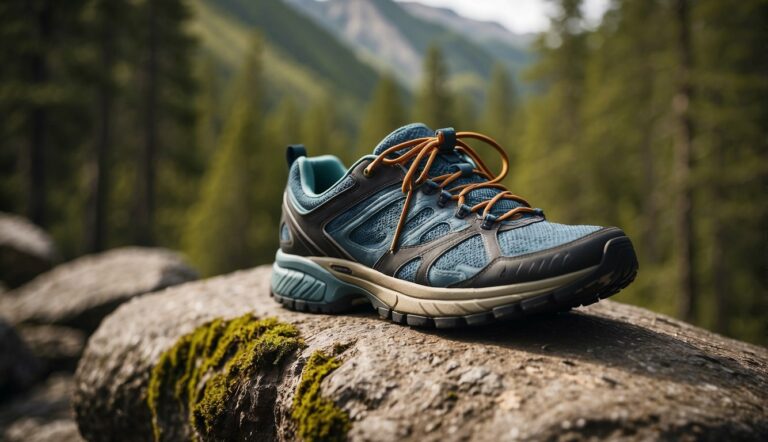The Role of Cadence in Trail Running: Mastering Your Stride Rate
In trail running, understanding and optimizing your cadence can significantly improve your efficiency and speed. Cadence, which refers to the number of steps a runner takes per minute, is a personal element of running form that varies with individual biomechanics and the demands of the trail terrain. While the standard suggestion for road runners is a cadence close to 180 steps per minute, trail runners might find their optimal stride rate to be different due to the constantly changing conditions underfoot.
As a UESCA certified running coach with extensive experience on the trails, I’ve observed that a “one size fits all” approach doesn’t apply to trail running cadence. Instead, the key lies in identifying a cadence that complements your running technique and the unique challenges that trails present, such as elevation changes, technical sections, and variable surfaces. Adjusting your cadence can help in reducing overstriding, which consequently may decrease injury risk and improve endurance on long runs.
Through practical training and becoming attuned to body’s cues, runners can discover a cadence range that feels natural and maintains efficiency on the trails. While specific numbers can provide a reference, it’s critical to listen to your body and respond adaptively to the diverse demands of trail running, seeking a stride rate that both conserves energy and propels you forward effectively.
Running Cadence for Trail Runners
Running cadence, or stride frequency, is a key factor in running performance and injury prevention. It’s not just about the number of steps you take but how those steps contribute to your run.
Importance of Cadence in Running
As a UESCA certified running coach with extensive experience, I can affirm that cadence is pivotal for efficiency and injury prevention in running. A cadence too low might indicate overstriding, which can lead to unnecessary stress on the joints. Conversely, a high cadence can improve running form by distributing the workload more evenly among the muscles.
- Optimal cadence: 180 steps per minute (spm) is often cited as ideal, but it’s not a one-size-fits-all figure.
- Efficiency: A higher stride rate can reduce ground contact time, making your steps more efficient.
Maintaining a good cadence can help lessen the impact on your knees and hips and may reduce the risk of running-related injuries.

Determining Your Current Cadence
To establish your optimal stride rate, start by determining your current cadence. To do this, count how many times your feet hit the ground in one minute of running.
Here’s a simple method:
- Run for one minute.
- Count the steps of one foot.
- Multiply by two to get the total for both feet.
This will give you your current steps per minute. Remember, while 180 spm is a useful benchmark, it may not be the perfect cadence for every runner. Your ideal cadence may vary based on your body’s mechanics and the running conditions. It’s important to work with a running coach like myself or use precise tools for measurement to refine and adjust your stride rate for the best results.
Biomechanics and Running Form
In trail running, understanding your biomechanics and refining your running form are crucial for optimizing running economy and reducing injury risk. These elements affect your stride rate, or cadence, which directly influences efficiency on the trails.
Influence of Biomechanics on Cadence
My experience coaching runners has shown that individual biomechanics play a pivotal role in determining the optimal cadence. It’s not a one-size-fits-all figure, as it can vary based on your physical structure and running mechanics. Stride length and foot strike pattern are two components of biomechanics that significantly affect cadence. For instance:
- Overstriding often leads to a lower cadence and can increase the risk of injury by causing unnecessary breaking forces through heel striking.
- A midfoot strike, coupled with a slight lean from the ankles and appropriate joint mechanics, tends to promote a more efficient stride and a higher cadence.
By observing these aspects of a runner’s technique, I can provide targeted advice to adjust their stride for an improved cadence that complements their individual biomechanics.

Proper Running Technique and Posture
Proper running form is critical for an efficient trail running experience. Here are the key components that I advise runners to focus on:
- Posture: Stand tall, with a slight forward lean from the ankles, not the waist. This position fosters a natural stride and helps in preventing overstriding.
- Arm Swing: Keep your arms relaxed at about a 90-degree angle, swinging them forward and back, not across your body, to maintain balance and rhythm.
- Foot Strike: Aim for a midfoot strike under your center of mass which usually results in a quicker cadence and less energy expenditure compared to heel striking.
By cultivating proper technique and posture, you support your body’s natural biomechanics, enhancing your running economy and minimizing the likelihood of injury. Monitoring and adjusting running form is a continuous process, but the benefits in performance and enjoyment are well worth the effort.
Cadence and Running Efficiency

Achieving optimal running efficiency involves understanding the delicate balance between cadence and stride length. This balance varies for each runner but is essential for maximizing performance while minimizing energy expenditure.
Cadence Versus Stride Length
Cadence, or the number of steps a runner takes per minute, is a pivotal element when considering trail running efficiency.
Stride length, on the other hand, is how far a runner travels with each step. I always recommend focusing on a quick and light cadence rather than overstriding, which can lead to excessive energy use and potential injury.
- Optimal Cadence Range: 170-180 steps per minute for most runners, adjusted for individual pace
- Stride Length: Varies with speed, terrain, and individual anatomy
Finding the right cadence allows for a balanced use of muscle groups and maintains a steady center of gravity, leading to efficient running over various terrains.
Economy and Energy Expenditure
Running economy refers to the amount of energy used at a given running speed. As a running coach, I emphasize that a higher cadence generally leads to a more economical running pattern by encouraging shorter, more frequent steps, thus reducing the impact force of each stride.
- Economic Cadence: Shorter, quicker steps can lower energy costs
- Energy Expenditure: Efficiently utilizing energy stores for enhanced performance
Efficient running, paired with a balanced power output, conserves valuable energy. As trail runners encounter diverse terrain, an adaptable cadence contributes to maintaining a consistent running economy, which is crucial for long-distance events.
Training Methods to Optimize Cadence for Trail Runners

Optimizing cadence is critical for trail runners to improve running efficiency and prevent injuries. My training approaches are designed to enhance stride rate while adapting to varied terrains.
Drills to Improve Stride Rate
To develop a more efficient stride rate, I often incorporate specific running drills into workouts. These exercises focus on increasing leg turnover and improving running form.
- High Knees: This drill emphasizes knee lift and helps increase cadence while promoting agility and coordination. Perform high knees for 30 seconds at a time during your warm-up.
- Butt Kicks: Aim to quickly kick your heels up to touch your buttocks, which encourages faster turnover. Include sets of 30-second butt kicks in your routine.
- Sprints: Integrating short sprints into training can raise your overall running speed. Start with 10-second sprints and gradually increase the duration as your endurance builds.
- Arm Drive: Efficient arm movement can contribute to a higher stride rate. Focus on driving your arms back and forth in a controlled manner synchronously with your legs.
Additionally, employing a metronome during training sessions can help you maintain a consistent cadence. Start with your natural cadence and incrementally increase the metronome’s pace to safely improve your stride rate.
Adjusting Cadence for Different Terrains
Trail running demands versatility in stride rate to navigate changing terrains effectively.
- Uphill: Shorten your stride and increase your cadence to maintain momentum. Integrate hill repeats into your weekly training plan to build strength and acclimate to elevation changes.
- Downhill: Keep a quick cadence to ensure better balance and control. Use light, swift steps to avoid overstriding, which can lead to injury.
- Flat Terrain: This is an excellent opportunity to find and maintain your optimal cadence. Use flat stretches to practice consistent pacing.
To conclude, adjusting your running cadence to the terrain is a form of strength training that can significantly improve your efficiency and resilience as an endurance runner. Include running drills and varied workouts in your training plan to develop agility, coordination, and the ability to quickly adjust your cadence to any trail condition.
Cadence Adaptation Over Time
Adapting running cadence is a dynamic process influenced by various factors including age, experience, and targeted training. Through progressive adjustments and tailored training, runners can optimize their stride rate for enhanced performance.
Age and Experience Factors
Age and fitness level often dictate a runner’s initial cadence. Beginner runners may start with a lower cadence and gradually increase their steps per minute (SPM) as they gain experience.
Older runners might notice a natural decline in cadence with age, but consistent training can counteract this trend. For instance, an elite distance runner with years of experience will likely have a higher cadence compared to a recreational runner of the same age. It’s essential for me to regularly assess and adjust my clients’ cadence in relation to their age and running history.
Progressive Changes in Running Cadence
A key element in enhancing stride rate is progressive training. Beginning with a runner’s baseline, small incremental increases in cadence can lead to improvements in running performance over time.
These adjustments are usually targeted towards a range of 170-190 SPM, depending on the individual’s biomechanics and endurance levels. As a coach, I recommend:
- Monitoring Cadence: Using a running watch to track current stride rate during runs.
- Incremental Increases: Aiming for a 5-10% increase in the current cadence, gradually over weeks.
- Adaptation Period: Allowing time for the body to adjust to the new stride rate without compromising form.
This approach helps runners avoid overstriding and promotes better efficiency and lower injury risk. Regular feedback and adjustments are pivotal for progressive training, which will be reflected in the progressive cadence changes and the resultant improvement in running economy.






